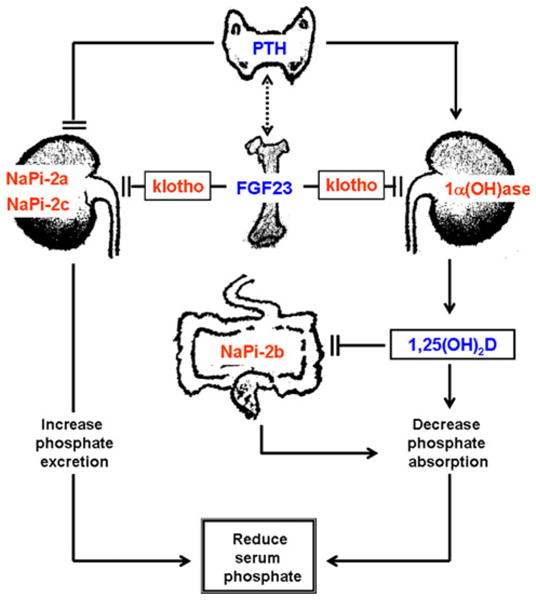Fig. 2.

Simplified diagram showing multi-organ interactions in regulation of phosphate homeostasis. Fibroblast growth receptor (FGF)23 produced in the bone cells can suppress renal NaPi-2a and NaPi-2c co-transporter activities to increase the urinary excretion of phosphate. Similarly, FGF23 can also suppress renal expression of 1α (OH)ase to reduce production of 1,25-dihydroxyvitamin D [1,25(OH)2D], which can suppress intestinal NaPi-2b activities to reduce phosphate absorption, resulting in decreased serum phosphate levels [3]. Of relevance, parathyroid hormone (PTH) can induce the expression of the 1α(OH)ase, and thereby can increase the production of 1,25(OH)2D, which in turn can inhibit PTH and 1α(OH)ase expression. Such transcriptional repression feedback maintains vitamin D homeostasis. The figure is adopted with modification from our earlier publication [29]
